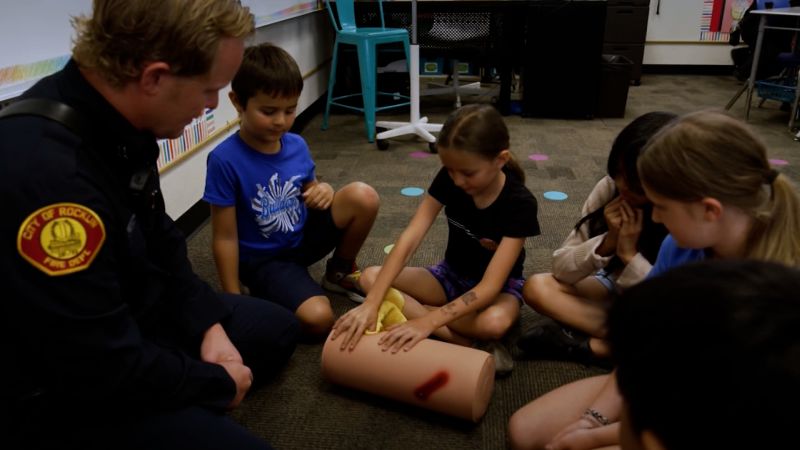When I visited Rocklin Elementary school, a third-grade class was learning a lesson on life-saving techniques that could one day make a difference. Trauma nurse Kate Carleton from Sutter Roseville Medical Center was teaching the kids how to stop a wound from bleeding out, with the lesson appropriately titled “Stop the Bleed”. Carleton has been teaching classes to students throughout the Rocklin school district on the basics of bleeding control, following a proposal she made after watching a special about the 2012 shooting at Sandy Hook Elementary.
This initiative is part of a larger movement known as “Stop the Bleed,” which was born out of the tragedy at Sandy Hook. The campaign, developed by trauma specialists including Dr. Lenworth Jacobs from Hartford Hospital, focuses on turning bystanders into immediate responders by teaching them how to pack a wound and use a tourniquet to stop bleeding. This approach, inspired by combat practices in Afghanistan and Iraq, has now reached over 3 million people worldwide through certification programs.
In schools across the country, bleeding control kits are now required in at least 10 states, with teachers and staff trained in at least three states. Some states even require students to undergo Stop the Bleed training, highlighting the importance of preparing individuals for emergency situations where quick action can save lives.
Carleton emphasizes the importance of teaching these life-saving techniques in a way that is accessible to kids, focusing on practical scenarios like accidents at home rather than violence. By empowering children with the knowledge and skills to respond in emergency situations, the hope is that more lives can be saved in critical moments.



